RIP, Little Buddy.

RIP, little buddy.
More Posts from Fillthevoid-with-space and Others
How hard is it to become an austronaut? I want to start to studie astrophysics and I don't know if I'll ever get any kind of job. Do you have any tips for people like me?
Astrophysics is a perfect field for pursuing any work at NASA! A degree in a STEM field is a requirement of becoming an astronaut, but other than that there are many possibilities. One of the best things about the astronaut office is its diversity. We are scientists, engineers, military pilots, flight test engineers, medical doctors, etc. etc. My biggest tip is to ensure you are pursuing what it is you are passionate about as that’s the only way to truly become exceptional at what you are doing, and most importantly, to be happy doing it. Passion, hard work, and dedication will get you there. Good luck!

TELLURIAN
[adjective]
1. of or characteristic of the earth or its inhabitants; terrestrial.
[noun]
2. an inhabitant of the earth.
3. Tellurion: an apparatus for showing the manner in which the diurnal rotation and annual revolution of the earth and the obliquity of its axis produce the alternation of day and night and the changes of the seasons.
Etymology: from Latin tellūs, “the earth” + -ian, "of, relating to, or resembling".
[Frank Moth - We Used To Live There]

New Zealand was lovely, but I already touched on what I’d be tempted to talk about with my Southern Stars episode. A person I interviewed as a potential new housemate gave me the idea for this episode because the joy of outer space is truly everywhere and anywhere. The field of astrogeology was not something I had heard of before, though I had indirectly heard of Eugene Shoemaker. I knew the comet Shoemaker-Levy 9 was named after him (and Carolyn Shoemaker, his wife). It turns out he basically founded the modern field of astrogeology! So I talk about him for quite a while, too.
Below the cut are the glossary, transcript, sources, and music credits. Send me any topic suggestions via Tumblr message (you don’t need an account to do this, just submit as anonymous). You can also tweet at me on Twitter at @HDandtheVoid, or you can ask me to my face if you know me in real life. Subscribe on iTunes to get the new episodes of my semi-monthly podcast, and please please please rate and review it. Go ahead and tell friends if you think they’d like to hear it, too!
(The next episode is definitely going to be on famous comets, and I’m hoping to publish that episode in May.)
Glossary
active galaxy - a galaxy with a small core of emission embedded at the center. This core is typically very variable and very bright compared to the rest of the galaxy. These galaxies emit much more energy than they should; this excess energy is found in the infrared, radio, UV, and X-ray regions of the electromagnetic spectrum.
black hole - a region of spacetime where a great deal of mass and energy have been compressed into a relatively small space. Black holes exert such strong gravitational effects that no mass or energy, not even light, can escape from inside them. There are supermassive black holes in galaxies that contribute to the development and life cycle of galaxies.
blazar - a subcategory of active galaxy, it is an extremely bright, distant object, powered by a black hole, which emits massive amounts of energy. It is distinct from a quasar because it is even brighter.
interferometry - a group of techniques to extract information from superimposing electromagnetic waves to create interference. In radio astronomy, this is done by using a wide spread of receivers to look at the same distant object, then bringing that data together with a correlator that can create a larger, clearer picture than an individual radio telescope alone could.
Messier object - a deep-sky object included on a list of 103-110 deep-sky objects made by Charles Messier and his colleagues in the 18th century in an attempt to prevent fuzzy, bright objects from being confused with comets.
torus - a donut shape.
quasar - a distant, massive celestial object that emits extremely large amounts of energy. These star-like objects may reflect a stage in the evolution of some galaxies.
Script/Transcript
Sources
Black Holes, explained via National Geographic
What Is a Black Hole? via NASA
Black Holes via NASA
Black Hole via Swinburne University of Technology
Darkness Visible, Finally: Astronomers Capture First Ever Image of a Black Hole via the New York Times (April 2019)
Event Horizon Telescope
Astronomers Capture First Image of a Black Hole via ESO (April 2019)
How They Took the First Picture of a Black Hole via New York Times (April 2019)
Intro Music: ‘Better Times Will Come’ by No Luck Club off their album Prosperity
Filler Music: ‘Flame On Flame (A Slow Dirge)’ by Kishi Bashi off his album Sonderlust
Outro Music: ‘Fields of Russia’ by Mutefish off their album On Draught
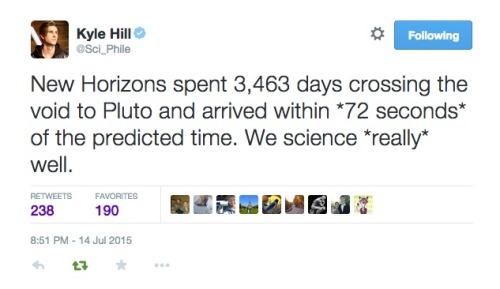
Its pretty incredible how accurate the science of astrophysics has gotten. New Horizons actually arrived 72 seconds early after travelling for almost 10 years straight to its destination.
A New Angle on Two Spiral Galaxies for Hubble’s 27th Birthday
In celebration of the 27th anniversary of the launch of NASA’s Hubble Space Telescope on April 24, 1990, astronomers used the legendary telescope to take a portrait of a stunning pair of spiral galaxies. This starry pair offers a glimpse of what our Milky Way galaxy would look like to an outside observer. The edge-on galaxy is called NGC 4302, and the tilted galaxy is NGC 4298. These galaxies look quite different because we see them angled at different positions on the sky. They are actually very similar in terms of their structure and contents. Image credit: NASA, ESA, and M. Mutchler (STScI) Read more NASA Media Usage Guidelines


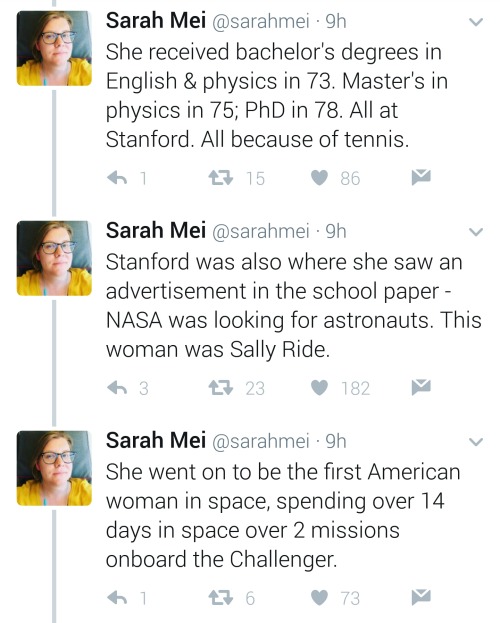

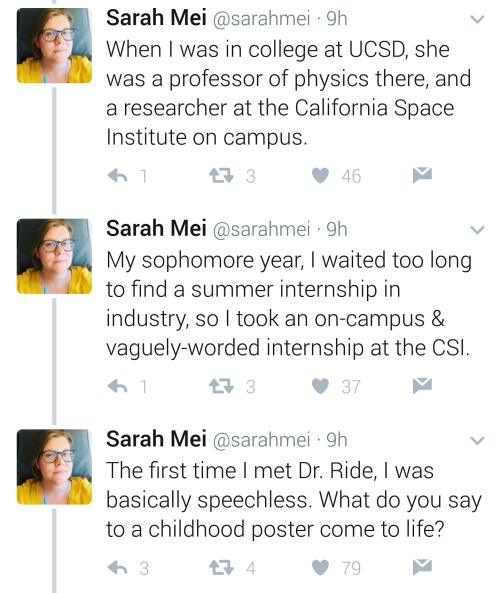
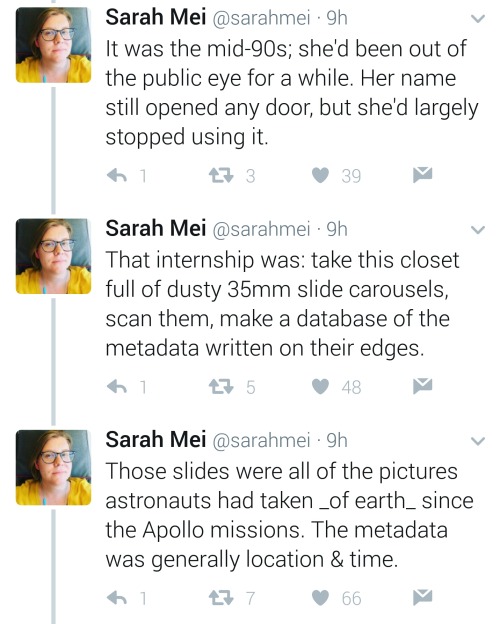
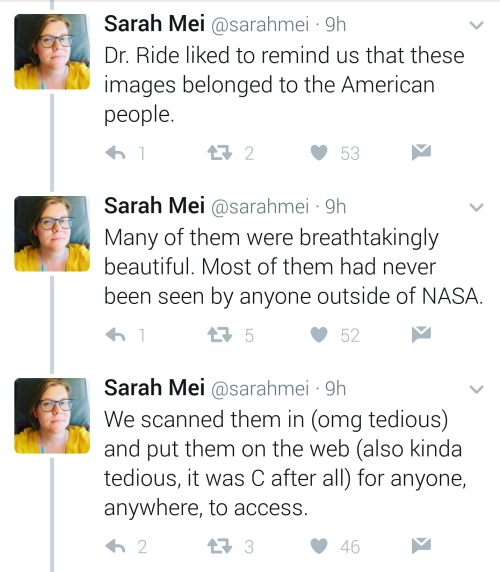
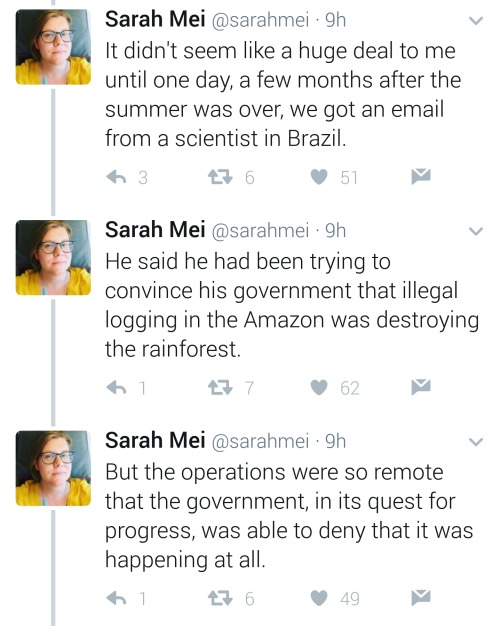
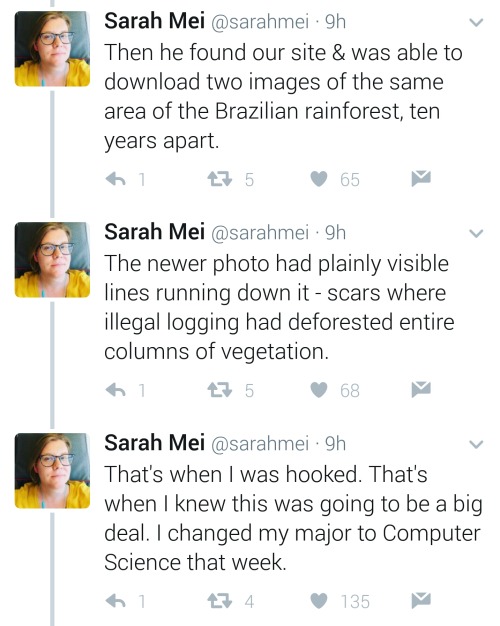
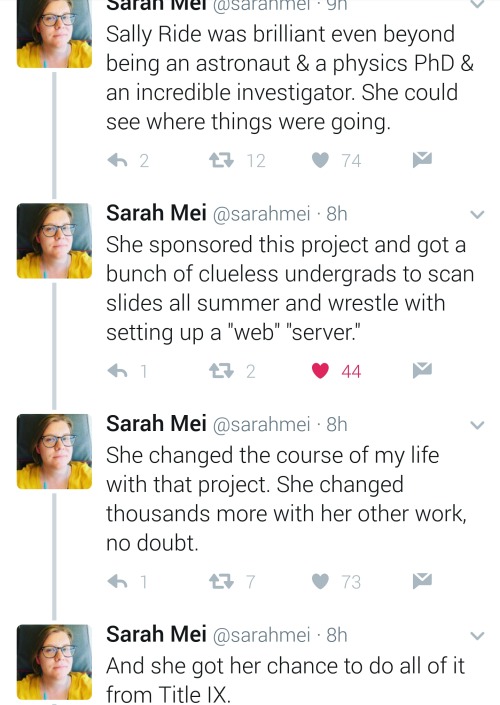
Equal opportunity benefits can be far-reaching
https://twitter.com/sarahmei/status/818682610712866817
I talked about Proxima Centauri last week but didn't realize it has a planet!








It’s starry scholastic month! Planet X will start it off with his first lesson: Proxima B!
http://www.space.com/33845-why-proxima-b-exoplanet-hard-to-find.html
What is an upcoming project/mission you're most excited for?
It is likely that I’ll be assigned a mission to the International Space Station (ISS) within the next few years. We’ve had a continuous presence on the Space Station for 17 years now, along with our international partners (Russian Space Agency, European Space Agency, Japanese Space Agency, and Canadian Space Agency). Missions on the ISS typically last 6 months. I’m incredibly excited to contribute to the impressive array of scientific experiments that we are conducting every day on ISS (I am a scientist after all!), and very much look forward to the potential of going for a spacewalk and gaining that perspective of gazing down on the fragile blue ball that is our home from above. Beyond that, being part of test missions on the Orion spacecraft (currently under construction at NASA!) would be an extraordinary opportunity. The current NASA plan is to send astronauts in Orion in a mission that will go 40,000 miles beyond the Moon in the early 2020s, reaching a distance further than that ever travelled by humans. I’d certainly be game for that!
-
 awkward-asexual-artistry liked this · 3 years ago
awkward-asexual-artistry liked this · 3 years ago -
 i-am-the-biggest-gay liked this · 5 years ago
i-am-the-biggest-gay liked this · 5 years ago -
 dotthx reblogged this · 6 years ago
dotthx reblogged this · 6 years ago -
 dotthx liked this · 6 years ago
dotthx liked this · 6 years ago -
 bushy-tailed-menace liked this · 6 years ago
bushy-tailed-menace liked this · 6 years ago -
 daisysbike liked this · 6 years ago
daisysbike liked this · 6 years ago -
 i-qualitybouquetwerewolf-me liked this · 6 years ago
i-qualitybouquetwerewolf-me liked this · 6 years ago -
 general-thinks liked this · 6 years ago
general-thinks liked this · 6 years ago -
 htchien reblogged this · 6 years ago
htchien reblogged this · 6 years ago -
 htchien liked this · 6 years ago
htchien liked this · 6 years ago -
 hypergutz liked this · 6 years ago
hypergutz liked this · 6 years ago -
 karthi0077-blog liked this · 6 years ago
karthi0077-blog liked this · 6 years ago -
 kevin-moren0 liked this · 6 years ago
kevin-moren0 liked this · 6 years ago -
 eduarddooo-blog liked this · 6 years ago
eduarddooo-blog liked this · 6 years ago -
 banjomaster64 liked this · 6 years ago
banjomaster64 liked this · 6 years ago -
 hahahafangirl liked this · 6 years ago
hahahafangirl liked this · 6 years ago -
 pallav reblogged this · 6 years ago
pallav reblogged this · 6 years ago -
 booksrainandacupacocoa liked this · 6 years ago
booksrainandacupacocoa liked this · 6 years ago -
 progrockdan1 liked this · 6 years ago
progrockdan1 liked this · 6 years ago -
 siodymph liked this · 6 years ago
siodymph liked this · 6 years ago -
 twin2814 liked this · 6 years ago
twin2814 liked this · 6 years ago -
 drunkopossum reblogged this · 6 years ago
drunkopossum reblogged this · 6 years ago -
 lyrisis liked this · 6 years ago
lyrisis liked this · 6 years ago -
 ashhoneyg liked this · 6 years ago
ashhoneyg liked this · 6 years ago -
 hiro-sedgefield liked this · 6 years ago
hiro-sedgefield liked this · 6 years ago -
 lillies-ofthevalley reblogged this · 6 years ago
lillies-ofthevalley reblogged this · 6 years ago -
 celenguini liked this · 6 years ago
celenguini liked this · 6 years ago -
 crowleyatticuss liked this · 6 years ago
crowleyatticuss liked this · 6 years ago -
 spaztomato13 liked this · 6 years ago
spaztomato13 liked this · 6 years ago -
 solvemeacrimesherlockholmes95 reblogged this · 6 years ago
solvemeacrimesherlockholmes95 reblogged this · 6 years ago -
 solvemeacrimesherlockholmes95 liked this · 6 years ago
solvemeacrimesherlockholmes95 liked this · 6 years ago -
 kirbykid16 reblogged this · 6 years ago
kirbykid16 reblogged this · 6 years ago -
 aroyaldarknessblr reblogged this · 6 years ago
aroyaldarknessblr reblogged this · 6 years ago -
 aroyaldarknessblr liked this · 6 years ago
aroyaldarknessblr liked this · 6 years ago -
 mrganymede reblogged this · 6 years ago
mrganymede reblogged this · 6 years ago -
 sir-princess-macca liked this · 6 years ago
sir-princess-macca liked this · 6 years ago -
 supendousderpwithsugar liked this · 6 years ago
supendousderpwithsugar liked this · 6 years ago
A podcast project to fill the space in my heart and my time that used to be filled with academic research. In 2018, that space gets filled with... MORE SPACE! Cheerfully researched, painstakingly edited, informal as hell, definitely worth everyone's time.
243 posts

